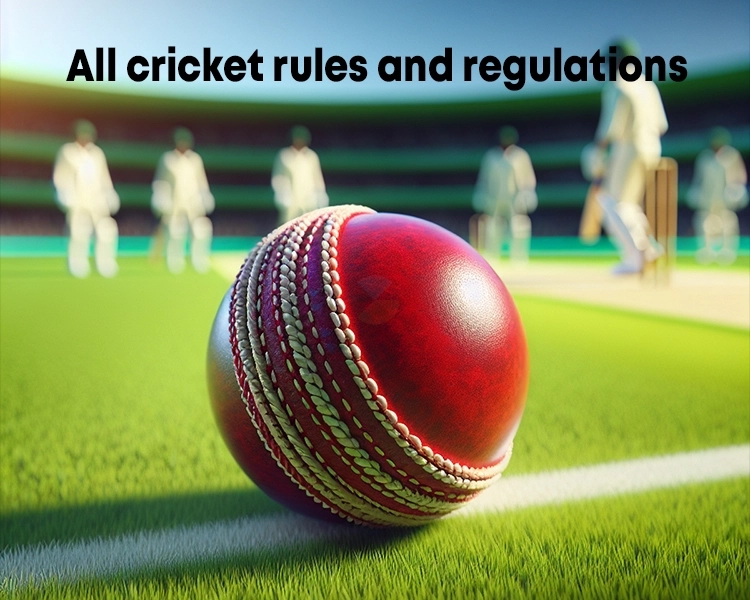Football rules and regulations
Football, also known as soccer in some parts of the world, is governed by a set of regulations known as the Laws of the Game. These laws are maintained by the International Football Association Board (IFAB) and provide the foundation for how the game is played globally. This guide will expand on the key rules of football, offering a comprehensive overview that spans everything from the dimensions of the field to the intricate details of fouls and penalties. Whether you're new to the sport or a seasoned fan, understanding these rules will enhance your appreciation of the game.
1. The Field of Play
The dimensions and markings of the football field are crucial to the game. A standard football field must be rectangular, with a length ranging from 100 to 130 yards (90-120 meters) and a width between 50 to 100 yards (45-90 meters). These dimensions ensure that the game is played within a controlled environment, with enough space for tactical maneuvers.
Markings:
The field is marked with lines to define various areas, including:
- Penalty Area: The box around each goal, where the goalkeeper can handle the ball and where penalties are awarded.
- Goal Area: A smaller area within the penalty box, primarily used for goal kicks.
- Center Circle: Located at the midpoint of the field, the center circle controls where players stand during a kick-off.
- Corner Arcs: Small quarter circles at each corner of the field, marking where the ball is placed for corner kicks.
These markings are essential for regulating the flow of the game and ensuring that players and officials are clear about the different zones and their purposes.
2. The Ball
The ball is the centerpiece of football, and its specifications are strictly regulated to maintain consistency in gameplay.
Size and Weight:
The official football must be spherical, with a circumference of 27-28 inches (68-70 cm) and a weight of 14-16 ounces (410-450 grams). The size and weight are designed to ensure that the ball is neither too heavy to slow down the game nor too light to become uncontrollable.
Material:
Traditionally made of leather, modern footballs are often made from synthetic materials that offer durability and performance in various weather conditions. The ball's surface is designed to minimize water absorption, allowing for consistent play even in wet conditions.
The ball's standardization is crucial in ensuring fair play across different levels of the game, from local matches to international tournaments.
3. Number of Players
A standard football team consists of 11 players, including one goalkeeper. The team’s formation and strategy depend on the distribution of these players across various positions, such as defenders, midfielders, and forwards.
Teams:
Each team must have no more than 11 players on the field at any given time. A match can only start if each team has at least seven players. This ensures that the game remains competitive and that each team has enough players to cover the field adequately.
Substitutions:
In most competitions, teams are allowed to make three substitutions during a match. However, certain tournaments or leagues may allow more, especially in cases of injuries or extra time. Substitutions provide teams with tactical flexibility, allowing them to adjust to the flow of the game or replace tired or injured players.
The substitution rules also ensure that the game remains dynamic, with fresh players bringing new energy and tactics to the field.
4. The Player's Equipment
Football players must wear specific gear to ensure their safety and the fairness of the game.
Basic Equipment:
The essential items include a jersey, shorts, socks, shin guards, and appropriate footwear. Shin guards are mandatory and must be covered by the socks to protect players from injuries caused by kicks or tackles.
Goalkeepers:
Goalkeepers must wear a different color from their teammates, opponents, and referees. This distinction helps referees and players identify the goalkeeper, who has special privileges, such as handling the ball within the penalty area.
Additional Rules:
Players are prohibited from wearing any items that may cause injury to themselves or others, such as jewelry. Before each match, referees check players to ensure compliance with these rules.
The equipment regulations are in place to ensure that all players are adequately protected and that the game is played fairly and safely.
5. The Referee
The referee is the authority on the field, responsible for enforcing the Laws of the Game and ensuring that the match is played fairly.
Authority:
The referee has full authority to make decisions on all aspects of the game, including stopping, suspending, or terminating the match if necessary. They are responsible for enforcing the rules, managing the players, and ensuring that the game is played in a safe and fair manner.
Powers:
Referees can issue warnings, yellow cards (cautions), or red cards (dismissals) to players who violate the rules. They also have the power to decide on incidents not explicitly covered by the Laws of the Game, ensuring that the spirit of the game is upheld.
The role of the referee is vital in maintaining the flow and fairness of the game, making quick decisions that can impact the outcome of the match.
6. Assistant Referees
Assistant referees, often called linesmen, play a supportive role in helping the main referee make accurate decisions.
Role:
They assist with determining when the ball has crossed the boundaries of the field, signaling offsides, and spotting fouls or misconduct that occur out of the referee’s view. They use flags to communicate their observations to the referee.
Communication:
Assistant referees work closely with the main referee, using a combination of signals and communication devices to ensure that decisions are made accurately and efficiently.
The presence of assistant referees enhances the accuracy of decisions, especially in situations where the referee’s view may be obstructed.
7. Duration of the Match
Football matches are played in two halves, each lasting 45 minutes, with a 15-minute halftime interval.
Two Halves:
The two 45-minute halves constitute the standard duration of a football match. This format allows teams to regroup and adjust their strategies during halftime.
Added Time:
At the end of each half, the referee may add extra time, known as stoppage or injury time, to compensate for delays caused by injuries, substitutions, or other interruptions. The amount of added time is at the referee's discretion and is announced at the end of the regular 45 minutes.
Extra Time and Penalties:
In knockout competitions, if the match is tied after 90 minutes, extra time (two additional 15-minute halves) may be played. If the tie persists, the match may be decided by a penalty shootout.
The timing regulations ensure that the game is played within a consistent and fair timeframe while allowing for flexibility in case of delays.
8. The Start and Restart of Play
The game begins with a kick-off and can be restarted in several ways depending on how play was stopped.
Kick-off:
A kick-off from the center of the field starts the match, begins the second half, and restarts play after a goal is scored. All players must be in their half of the field, and the team not taking the kick-off must be outside the center circle.
Drop Ball:
If play is stopped for a reason other than a foul or the ball going out of bounds, a drop ball is used to restart the game. The referee drops the ball at the point where it was last in play, and any player can contest for it once it touches the ground.
Throw-In:
A throw-in is awarded when the ball crosses the touchline, last touched by an opponent. The ball is thrown from the point where it crossed the line, using both hands, and delivered from behind and over the head.
Corner Kick:
A corner kick is awarded when the ball crosses the goal line, last touched by a defender, and a goal is not scored. The ball is placed in the corner arc nearest where it crossed the line and kicked into play.
Goal Kick:
A goal kick is awarded when the ball crosses the goal line, last touched by an opponent, and a goal is not scored. The ball is kicked from within the goal area and must leave the penalty area before being touched by another player.
These rules for starting and restarting play are designed to maintain the flow of the game while ensuring that any stoppages are handled fairly and consistently.
9. The Ball In and Out of Play
Understanding when the ball is in or out of play is crucial for the flow of the game.
In Play:
The ball is considered in play at all times unless it has completely crossed the goal line or touchline, or the referee has stopped play for a foul, injury, or other reasons. This means that the game continues as long as the ball remains within the boundaries of the field and no infractions have occurred.
Out of Play:
The ball is out of play when it has fully crossed the goal line or touchline, whether on the ground or in the air. Play is also stopped when the referee blows the whistle for a foul, injury, or any other reason.
These rules ensure that the game is played continuously, with minimal interruptions, while providing clear guidelines for when play should be stopped and restarted.
10. The Method of Scoring (Continued)
Own Goal:
If a player accidentally scores in their own goal, the goal is awarded to the opposing team. Own goals can occur due to deflections, mishandled clearances, or mistakes under pressure.
Verification of Goals:
The referee and assistant referees are responsible for determining whether a goal is valid. With the advent of technology, systems like Goal-Line Technology (GLT) and Video Assistant Referee (VAR) assist in making accurate decisions about whether the ball has completely crossed the line.
Scoring rules are straightforward, but the dynamics of the game can make each goal momentous, often changing the course of a match.
11. Offside
The offside rule is one of the most discussed and sometimes controversial aspects of football. It prevents attacking players from gaining an unfair advantage by positioning themselves closer to the opponent's goal than both the ball and the second-last defender.
Offside Position:
A player is in an offside position if they are nearer to the opponent's goal line than both the ball and the second-last opponent when the ball is played to them, unless they are in their own half of the field. Being in an offside position is not an offense in itself; it only becomes an offense if the player becomes actively involved in play.
Active Play:
A player in an offside position is penalized only if, at the moment the ball is played to them, they are involved in active play by:
- Interfering with an opponent.
- Gaining an advantage from being in that position.
- Interfering with the play by playing or touching the ball.
Exceptions:
A player cannot be offside if they receive the ball directly from a goal kick, corner kick, or throw-in. These scenarios allow for more attacking opportunities without the constraint of the offside rule.
The offside rule is crucial for maintaining fairness in the game, preventing “goal-hanging” where players remain near the opponent's goal waiting for a pass.
12. Fouls and Misconduct
Fouls and misconduct are actions by players that violate the rules of the game, and they are penalized accordingly to ensure fair play.
Direct Free Kick Fouls:
These are serious infractions that result in a direct free kick for the opposing team. Examples include:
- Kicking or attempting to kick an opponent.
- Tripping or attempting to trip an opponent.
- Charging an opponent.
- Striking or attempting to strike an opponent.
- Pushing an opponent.
- Holding an opponent.
- Spitting at an opponent.
- Deliberate handball (except by the goalkeeper within their own penalty area).
Indirect Free Kick Fouls:
Less severe fouls result in an indirect free kick, where the ball must touch another player before a goal can be scored. Examples include:
- Playing in a dangerous manner.
- Impeding the progress of an opponent without contact.
- Preventing the goalkeeper from releasing the ball.
- Offenses by the goalkeeper, such as holding the ball for more than six seconds.
Misconduct:
Misconduct includes actions like unsporting behavior, dissent by word or action, and persistent infringement of the Laws of the Game. Misconduct can be penalized by issuing yellow or red cards:
- Yellow Card: A caution issued for unsporting behavior, dissent, delaying the restart of play, or other infractions.
- Red Card: A dismissal from the match, usually for serious foul play, violent conduct, or receiving a second yellow card in the same game. A player shown a red card must leave the field and cannot be replaced, leaving their team with fewer players.
The enforcement of fouls and misconduct rules ensures that football is played fairly, with respect for opponents and the spirit of the game.
13. Free Kicks
Free kicks are awarded to a team after a foul or infringement by the opposing team. They can be classified as either direct or indirect, depending on the nature of the foul.
Direct Free Kick:
A direct free kick allows the team taking it to score directly from the kick. These kicks are awarded for more serious fouls and are often taken close to the opponent's goal, making them significant scoring opportunities.
Indirect Free Kick:
An indirect free kick requires the ball to touch another player before a goal can be scored. These are awarded for less severe fouls and are often taken from positions where scoring directly would be difficult.
Wall Formation:
When a direct free kick is taken close to the opponent's goal, the defending team is allowed to form a "wall" of players to block the shot. However, the wall must be at least 10 yards away from the ball when the kick is taken.
Free kicks are key moments in a football match, often leading to goal-scoring opportunities or changing the momentum of the game.
14. Penalty Kicks
A penalty kick is one of the most critical moments in a football match, awarded for fouls committed by a defender inside their own penalty area.
Award:
Penalty kicks are awarded for direct free kick fouls committed within the defending team’s penalty area. The penalty kick is taken from the penalty mark, 12 yards from the goal line, with only the goalkeeper allowed to defend.
Execution:
During a penalty kick, all players except the kicker and the goalkeeper must be outside the penalty area and at least 10 yards from the penalty mark. The kicker must strike the ball forward, and the goalkeeper must remain on the goal line until the ball is kicked.
Retakes:
If the goalkeeper moves off the line before the ball is kicked or if other players encroach into the penalty area before the kick is taken, the referee may order a retake of the penalty.
Penalty kicks are high-pressure situations that can decide the outcome of a match, especially in knockout stages of tournaments.
15. Throw-In
A throw-in is used to restart play when the ball has crossed the touchline.
Award:
A throw-in is awarded to the opposing team of the player who last touched the ball before it crossed the touchline. The throw-in is taken from the point where the ball crossed the line.
Execution:
The player taking the throw-in must:
- Face the field of play.
- Have part of each foot either on the touchline or on the ground outside the touchline.
- Use both hands to deliver the ball from behind and over their head.
Foul Throw:
If the throw-in is not executed correctly, it is considered a foul throw, and the throw-in is awarded to the opposing team.
Throw-ins are simple but important aspects of the game, often leading to quick changes in possession or setting up attacking opportunities.
16. Goal Kick
A goal kick is a method of restarting play when the ball has crossed the goal line without a goal being scored, last touched by an attacking player.
Award:
A goal kick is awarded to the defending team when the ball crosses the goal line, last touched by an opponent, without a goal being scored.
Execution:
The ball is placed anywhere within the goal area and kicked into play by a player from the defending team. The ball must leave the penalty area before it can be touched by another player.
Tactics:
Teams often use goal kicks as a tactical tool, either playing short passes to retain possession or sending long balls upfield to initiate an attack.
Goal kicks are common occurrences in football matches, offering a chance for the defending team to reset and regain control of the ball.
17. Corner Kick
A corner kick is awarded when the ball crosses the goal line without a goal being scored, last touched by a defender.
Award:
A corner kick is awarded to the attacking team when the ball crosses the goal line, last touched by a defender, and a goal is not scored.
Execution:
The ball is placed within the corner arc nearest to where it crossed the goal line. An attacking player kicks the ball into play, usually aiming to create a goal-scoring opportunity by sending the ball into the penalty area.
Strategies:
Teams often use various strategies during corner kicks, such as crowding the goalkeeper, using decoy runs, or placing players at the near or far posts to increase the chances of scoring.
Corner kicks are crucial moments in a match, often leading to goals or creating pressure on the defending team.
You may also like
Complete Cricket rules and regulations | Everything You Need to Know
Conclusion
Understanding the rules of football is essential for players, coaches, and fans alike. These rules ensure that the game is played fairly, safely, and within a structured framework. From the dimensions of the field to the intricacies of fouls and penalties, each rule contributes to the unique flow and excitement of the game. Whether you're watching or playing, a solid grasp of these football rules and regulations will deepen your appreciation for the sport.









 Ingning
Ingning







